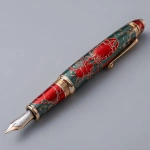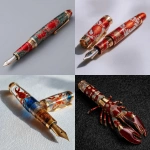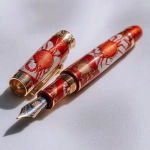Explore the Best AI Image Gallery

Beyond the Canvas: How Wearable Tech is Redefining Artistic Expression
The realm of creativity has always been driven by innovation, constantly pushing boundaries and exploring new mediums. In recent years, wearable technology has emerged as a powerful force, reshaping artistic expression in profound ways. From interactive installations to personalized experiences, wearables are blurring the lines between artist, audience, and artwork, opening up exciting possibilities for the future of art.
Wearable Tech: A New Artistic Toolkit
Wearable devices are no longer just about fitness tracking or communication; they are becoming sophisticated tools for artistic creation.
- Haptic Feedback and Motion Sensing: Imagine sculpting with your movements, translating every gesture into tangible form. Wearables equipped with haptic feedback and motion sensors allow artists to interact directly with their creations, adding a new dimension of physicality to the artistic process.
- Augmented Reality (AR) Integration: AR glasses and contact lenses can overlay digital elements onto the real world, creating immersive environments where art transcends physical boundaries. Artists can use these tools to design interactive installations that respond to viewers movements or create augmented reality artworks that evolve in real time.
- Biometric Data as Art: Wearable sensors can capture physiological data like heart rate, body temperature, and even brain activity. Artists can utilize this raw data to generate unique and evocative artwork, transforming personal experiences into visual or sonic representations.
Beyond the Studio: Wearables for Interactive Art Experiences
Wearable tech is not only changing how art is created but also how it is experienced.
- Immersive Performances: Imagine attending a concert where each audience member has a wearable device that responds to the music, creating a personalized and dynamic soundscape. Wearables can enhance live performances by adding layers of interactivity and engagement.
- Interactive Installations: Public art installations can become more participatory with wearables. Imagine walking through a sculpture garden where your movements trigger light shows or sound effects, transforming the artwork into a shared experience.
- Collaborative Creations: Wearable tech can facilitate real-time collaboration between artists and viewers. Participants can contribute to an evolving artwork using their devices, blurring the lines between creator and audience.
Ethical Considerations in the Age of Wearable Art
As with any emerging technology, wearable art raises important ethical considerations that need careful attention:
- Privacy Concerns: Wearables collect a wealth of personal data. Artists and institutions must ensure that this data is handled responsibly and ethically, obtaining consent from participants and protecting their privacy.
- Accessibility and Inclusivity: The cost and complexity of wearable technology can create barriers to access for some artists and audiences. Its crucial to strive for inclusivity and ensure that everyone has the opportunity to participate in and benefit from this evolving art form.
- Authenticity and Ownership: When artwork is created using AI algorithms or biometric data, questions arise about authorship and authenticity. Clear guidelines and ethical frameworks are needed to address these complex issues.
Future Trends: The Evolving Landscape of Wearable Art
The future of wearable art is brimming with possibilities:
- Integration with AI: Artificial intelligence will play an increasingly important role in generating, curating, and personalizing wearable art experiences.
- Nanotechnology and Biocompatibility: Imagine wearables that seamlessly integrate with the human body, becoming extensions of our senses and creative potential.
- Cloud-Based Collaboration: Wearable platforms will enable artists from around the world to collaborate on projects in real time, breaking down geographical barriers and fostering global creativity.
Conclusion
Wearable technology is transforming the art world, empowering artists with innovative tools and creating immersive experiences for audiences. As this field continues to evolve, it will be fascinating to see how wearables further redefine artistic expression, blurring the lines between technology and creativity.



